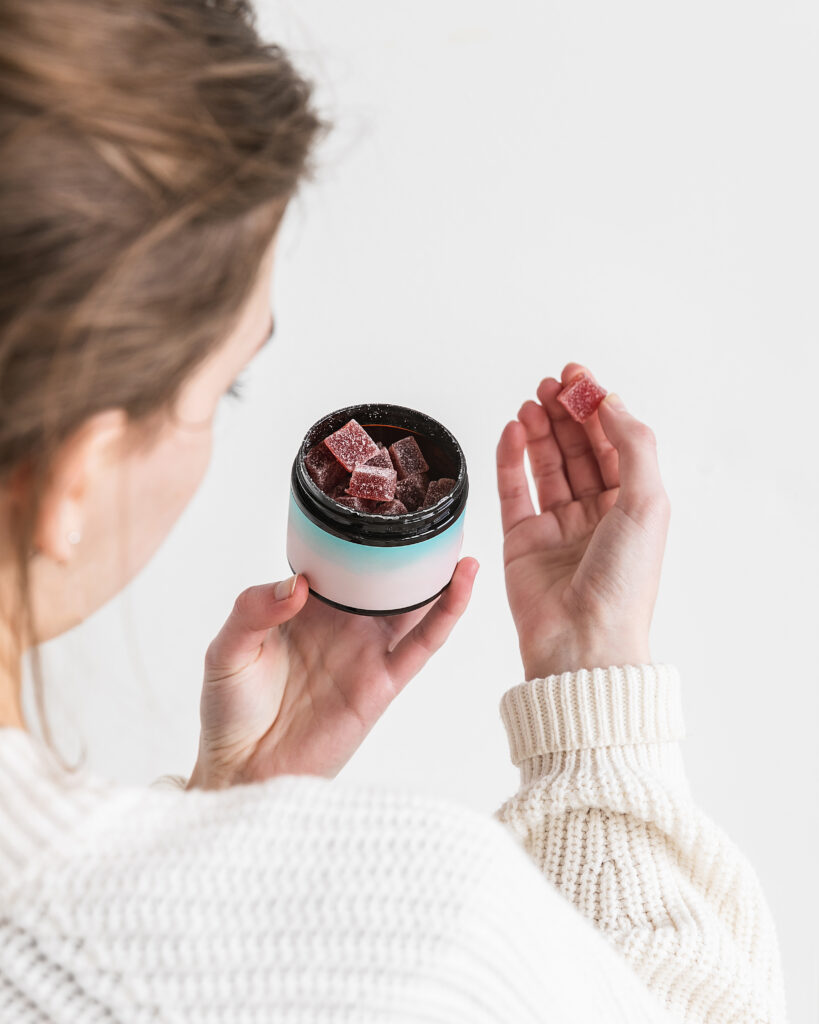Gummies were once the stuff of lunchboxes and movie theater candy bags — sugary,
artificial, and meant to be anything but healthy. Today, that same soft, chewy format has
become a surprisingly popular delivery system for what’s being marketed as serious
nutrition.
Superfood gummies — bite-sized supplements laced with everything from ashwagandha
and turmeric to spirulina and vitamin D — are now a billion-dollar segment of the wellness
industry. But as they fill the shelves of boutique wellness shops and Instagram feeds, one
question hangs in the air:
Are gummy superfoods actually effective — or are we just buying expensive candy?
This story dives into the science, sourcing, and skepticism behind the trend, asking
whether these cheerful chews live up to their health halo.
Gummy Wellness: Why the Format Took Off
The shift toward gummy-based supplements has been fueled by consumer demand for
convenience, taste, and visual appeal. According to data from Grand View Research, the
global gummy supplement market is projected to reach over $48 billion by the end of the
decade — driven largely by Millennials and Gen Z who increasingly prefer chewable
formats over capsules or powders.
“People hate taking pills,” says Dr. Lena Horowitz, a nutritional biochemist who advises
functional food companies. “Gummies tap into something psychological — they feel
indulgent and comforting. That increases compliance, and compliance is key in any
supplement regimen.”
In other words: you’re more likely to stick with a daily routine if it tastes like a treat. But
flavor isn’t the only thing that matters.
What’s Actually Inside: Nutrient Density and Formulation
So, what do you actually get in a superfood gummy?
Leading brands now pack a range of bioactive compounds into their formulations —
ingredients like turmeric (for inflammation), elderberry (for immunity), and adaptogens
such as ashwagandha and rhodiola (for stress support). Some even include functional
mushrooms like lion’s mane or reishi, and green superfoods like chlorella or wheatgrass.
But here’s the catch: dosing and absorption matter. A lot.
Many popular gummy products on the market contain sub-therapeutic doses — just
enough to include a trendy ingredient on the label, but far too little to produce real
physiological effects. For example:
- Turmeric: Effective anti-inflammatory doses typically start at 500 mg of curcumin
with black pepper extract for absorption. Some gummies contain as little as 30 mg. - Ashwagandha: Clinical studies use 250–600 mg of root extract. Gummy versions
often include less than 100 mg. - Vitamin D3: While effective in gummy form, not all brands meet recommended
daily values, especially for those with deficiencies.
“Many gummies are underdosed to maintain flavor and texture,” says Cara Mendez, RDN, a
registered dietitian specializing in nutraceuticals. “That doesn’t mean they’re useless —
but it does mean you need to choose carefully and be realistic about the results.”
Bioavailability: How Much Actually Reaches Your Bloodstream?
Even if your gummy contains therapeutic doses, the next hurdle is bioavailability — how
much of the active ingredient is absorbed by the body and makes it into systemic
circulation.
Here’s where things get tricky.
Some nutrients absorb well in gummy form. Fat-soluble vitamins like A, D, E, and K can be
effectively delivered via gummy if formulated with healthy oils. Vitamin C, B12, and folate
are also generally well-absorbed.
Others are more complex:
- Curcumin (from turmeric) has notoriously poor bioavailability unless paired with
piperine (black pepper extract) or encapsulated in liposomal delivery systems. - Adaptogens like ashwagandha are dose-sensitive, and only standardized extracts
(like KSM-66) have consistent, studied effects. - Plant-based powders like spirulina or kale extract can be healthy — but only in
large quantities, which are rarely present in a single gummy.
“Small format doesn’t mean small impact,” Dr. Horowitz says. “But the product has to be
designed intelligently. Without proper formulation, you’re just getting flavored gelatin with
good intentions.”

Sugar, Fillers, and What to Watch For
Not all gummies are created equal. In the race to create better-tasting wellness products,
some brands have leaned heavily on sugars, syrups, and artificial flavorings to mask
unpleasant-tasting ingredients.
Look out for:
- Added sugar exceeding 4-5g per serving
- High-fructose corn syrup or glucose syrup as base ingredients
- Gelatin vs. pectin: Vegan options use pectin; gelatin comes from animal collagen
- Artificial colors or flavors
There are clean-label brands doing things differently — using organic fruit purées, monk
fruit or stevia for sweetness, and offering third-party testing for purity. But consumers have
to do their research.
Do Gummy Superfoods Work?
The short answer is: they can — when properly formulated, adequately dosed, and taken
consistently.
The longer answer depends on the product, the user’s health status, and the ingredients
involved. Gummy delivery systems work well for certain nutrients and can genuinely
improve compliance for people who avoid pills or forget to take powders.
However, for more complex health conditions — inflammation, hormonal imbalance,
neurological support — gummies should be seen as a supplement to a larger protocol, not
a cure-all.
“If you’re taking a gummy multivitamin with 100 mg of ashwagandha and expecting your
anxiety to disappear, you’re setting yourself up for disappointment,” Mendez says. “But if
that gummy gets you started on a better routine and encourages daily self-care, it’s still
valuable.”
Bottom Line: What Should You Look For?
If you’re considering adding gummy superfoods to your routine, here’s what to keep in
mind:
- Read the label. Look for active ingredient dosages and third-party testing.
- Watch the sugar. Less than 3g per serving is ideal.
- Check for synergy. Are ingredients paired for better absorption (e.g., turmeric +
black pepper)? - Look for clinically studied extracts. Generic “ashwagandha” is not the same as
standardized KSM-66 or Sensoril. - Avoid the hype. No gummy will replace a balanced diet, exercise, or sleep.
Final Word
Gummy superfoods represent a compelling evolution in wellness — part science, part
psychology, and part convenience. They aren’t magic bullets, but they can be meaningful
tools for those seeking small, sustainable steps toward better health.
Whether you’re looking for more energy, better focus, or simply a healthier daily ritual, the
key is not just what’s in your gummy — it’s what you do with it.
Because in the end, wellness isn’t about the shape of your supplement. It’s about how well
it fits into your life.

Leave a Reply